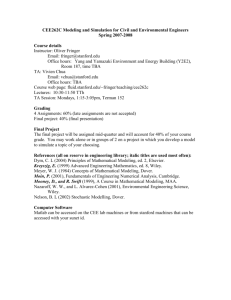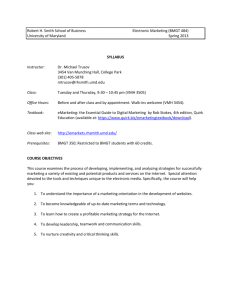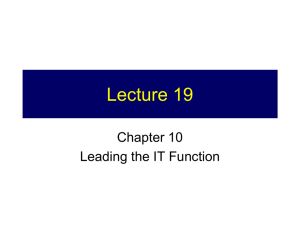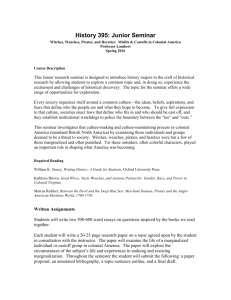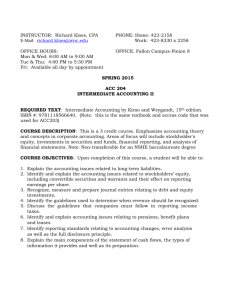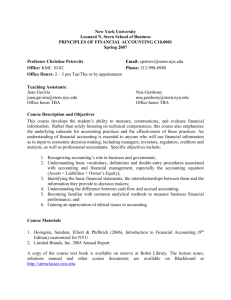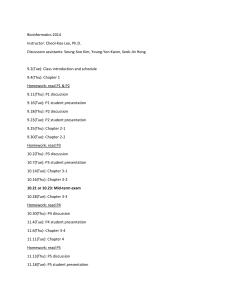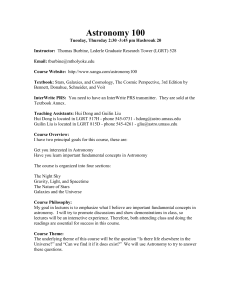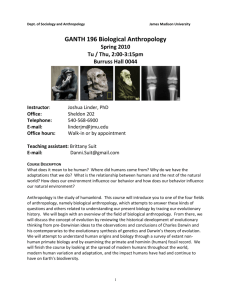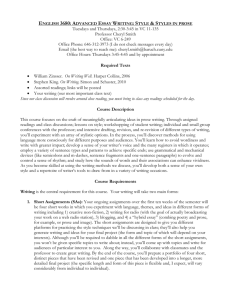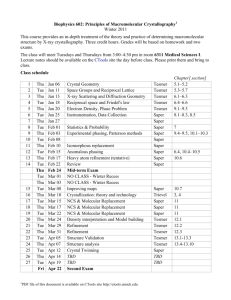Syllabus/Syllabi
advertisement
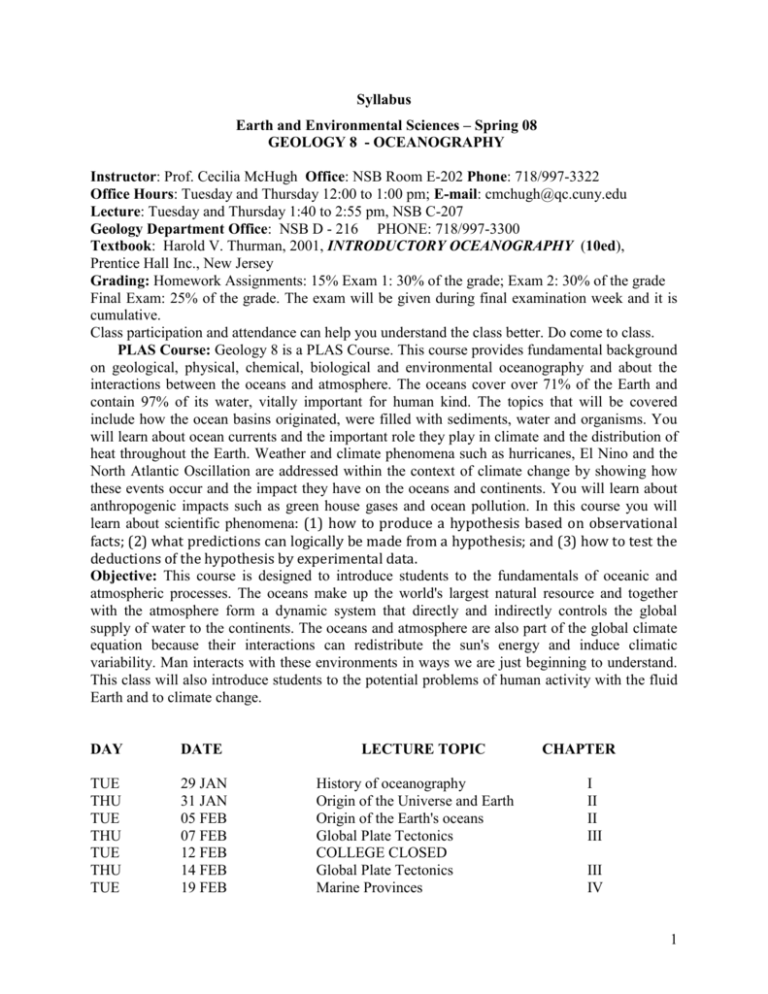
Syllabus Earth and Environmental Sciences – Spring 08 GEOLOGY 8 - OCEANOGRAPHY Instructor: Prof. Cecilia McHugh Office: NSB Room E-202 Phone: 718/997-3322 Office Hours: Tuesday and Thursday 12:00 to 1:00 pm; E-mail: cmchugh@qc.cuny.edu Lecture: Tuesday and Thursday 1:40 to 2:55 pm, NSB C-207 Geology Department Office: NSB D - 216 PHONE: 718/997-3300 Textbook: Harold V. Thurman, 2001, INTRODUCTORY OCEANOGRAPHY (10ed), Prentice Hall Inc., New Jersey Grading: Homework Assignments: 15% Exam 1: 30% of the grade; Exam 2: 30% of the grade Final Exam: 25% of the grade. The exam will be given during final examination week and it is cumulative. Class participation and attendance can help you understand the class better. Do come to class. PLAS Course: Geology 8 is a PLAS Course. This course provides fundamental background on geological, physical, chemical, biological and environmental oceanography and about the interactions between the oceans and atmosphere. The oceans cover over 71% of the Earth and contain 97% of its water, vitally important for human kind. The topics that will be covered include how the ocean basins originated, were filled with sediments, water and organisms. You will learn about ocean currents and the important role they play in climate and the distribution of heat throughout the Earth. Weather and climate phenomena such as hurricanes, El Nino and the North Atlantic Oscillation are addressed within the context of climate change by showing how these events occur and the impact they have on the oceans and continents. You will learn about anthropogenic impacts such as green house gases and ocean pollution. In this course you will learn about scientific phenomena: (1) how to produce a hypothesis based on observational facts; (2) what predictions can logically be made from a hypothesis; and (3) how to test the deductions of the hypothesis by experimental data. Objective: This course is designed to introduce students to the fundamentals of oceanic and atmospheric processes. The oceans make up the world's largest natural resource and together with the atmosphere form a dynamic system that directly and indirectly controls the global supply of water to the continents. The oceans and atmosphere are also part of the global climate equation because their interactions can redistribute the sun's energy and induce climatic variability. Man interacts with these environments in ways we are just beginning to understand. This class will also introduce students to the potential problems of human activity with the fluid Earth and to climate change. DAY DATE TUE THU TUE THU TUE THU TUE 29 JAN 31 JAN 05 FEB 07 FEB 12 FEB 14 FEB 19 FEB LECTURE TOPIC History of oceanography Origin of the Universe and Earth Origin of the Earth's oceans Global Plate Tectonics COLLEGE CLOSED Global Plate Tectonics Marine Provinces CHAPTER I II II III III IV 1 THU TUE THU TUE THU TUE THU TUE THU TUE THU TUE THU TUE THU TUE THU 21 FEB 26 FEB 28 FEB 04 MAR 06 MAR 11 MAR 13 MAR 18 MAR 20 MAR 25 MAR 27 MAR 01 APR 03 APR 08 APR 10 APR 15 APR 17 APR TUE THU TUE THU TUE 29 APR 01 MAY 06 MAY 08 MAY 13 MAY Marine Provinces Marine Sediments Marine Sediments Water and Seawater FIRST EXAMINATION Water and Seawater Air Sea Interaction Air Sea Interaction Ocean Circulation Ocean Circulation Waves SECOND EXAMINATION Tides Tides The Coast and Shoreline The Coast and Shoreline Coastal, Estuarine, Marginal Seas SPRING RECESS The Living Ocean Animals of the Ocean Animals of the Ocean Marine Resources Marine Pollution IV V V VI VI VII VII VIII VIII IX X X XI XI XII XIII XV XVI XVII XVIII 2


